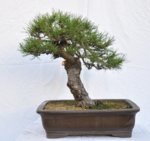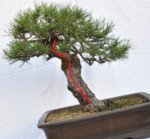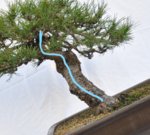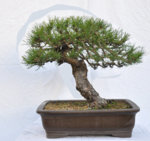After much ado, my logical side finally won out
The path I was on was clearly not working. No regrets, but I continue to feel lost.
My petty gripe is that I spent a great deal of time removing downward going needles - a few days pass, I take this pic, and what do I see? This tree tends to produce a two-stage flush similar to some shore pines. The first flush is long needles, then bud re-extends with microscopic ones with next year's bud capping it off by the time of the summer solstice. I am (and maybe we are) accustomed to seeing pine canopies be like JBP, so maybe figuring out how to make this tree produce shorter needles will help.







